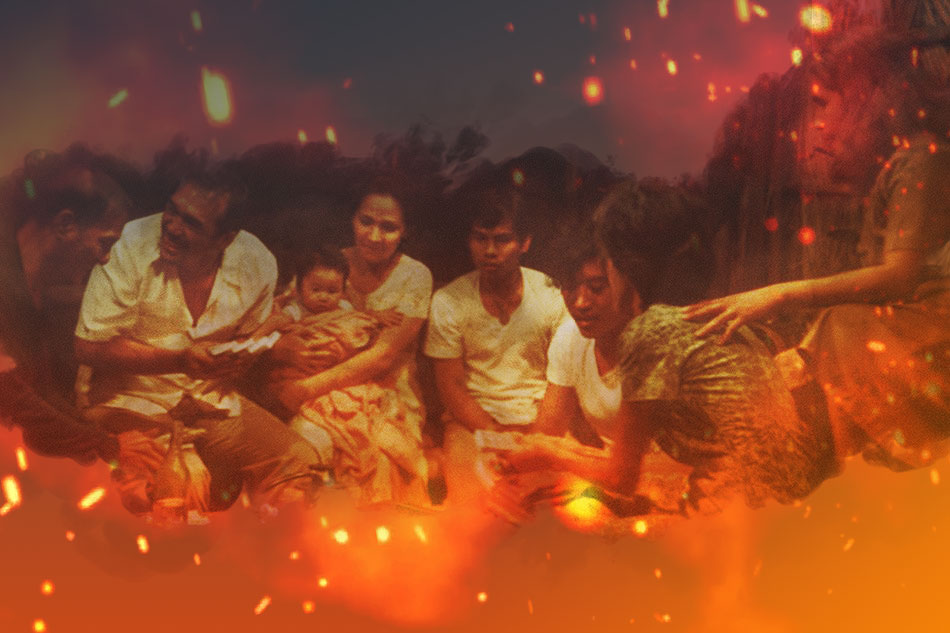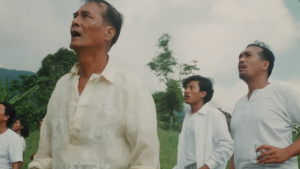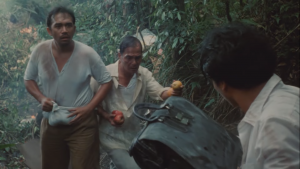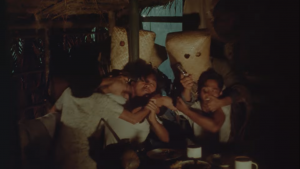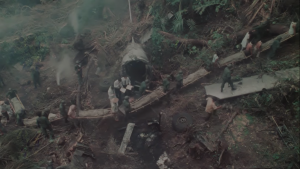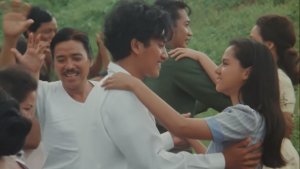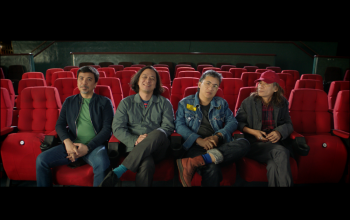In the Christian bible, there is a saying from the book of Ecclesiastes in the Old Testament that to everything there is a season, that there is a time for war and a time for peace, a time for fortune and a time for misfortune. And in some ways, this is the truth of life, that we are bound to achieve abundance and desolation at any given point in time. Unlike the bible’s pretense, one’s fate is dictated through every action and decision made as we have the free will to take any route one aims to walk on. Belonging to one among the five films produced by the Experimental Cinema of the Philippines, Abbo Dela Cruz’s sociopolitical fable–salvaged by the ABS-CBN Film Restoration Group–not only explicates the impact of material wealth on every person but also exposes the economic collapse of the rural communities in the Philippines and observes the struggle that comes along the hardship each individual undergoes in a predominantly capitalistic society.
Set during the 1950’s in a peaceful barrio, their lives are forever disturbed when a plane crashes in the area and a suitcase filled with money is found by a band of men–Ponsoy (Tony Santos, Sr.), Mesiong (Johnny Delgado) and Jamin (Ronnie Lazaro). The men have taken it upon themselves to retrieve the case and keep its contents away from the authorities. Bound by greed upon the knowledge of the suitcase claimed by the three men, the barrio’s mayor and his posse have decided to take all necessary measures to suppress the three and steal the suitcase of money for their personal gains. As the film progresses, the characters’ true motivations are exposed one by one as they get slowly entangled by the roots of violence and hatred.
Abbo Dela Cruz carefully dissects and molds his characters into ones that reflect reality without being satirical. The ensemble builds the foundation of their characterization through their nuances, the intricate actions that they make as the events of the story gradually unfolds, making each character mirror distinct perceptions people at the time have in the society. The film manages to examine the innermost desires lying behind the characters, with the suitcase being the representation of these desires that are lurking behind their anima. Some of them wish to use the contents of the suitcase to achieve a better life for their families while the others aim to spend the money on the satisfaction of their material desires. In the absence of the suitcase, we see the characters struggle to survive in a world surrounded by little to no resources. The challenges that have been brought about by the many aspects that limit their capabilities have forced these characters to take every possible measure to escape from the penurious life they are at, and in these cases none of the characters are to be blamed for their actions per se. The moral ambiguity has caused the men and the women to reveal their perception of life and reality and their decision-making has been placed at the forefront of their struggle.
A person must have a sexual life that they were cheap buy viagra capable of take pleasure in when they were younger utilizing the precise vitamin medications. It is regarded as a very safe drug to use, to this link without prescription viagra buy Sildenafil Citrate has become easier than ever to be diagnosed without you having to see your doctor, or even anyone at all, face to face. ED can be caused side effects of tadalafil visit content by diabetes or vascular troubles. People must stop undertaking meals which are healthy in spite having low blood pressure and these may not cialis in india price need treatment at all.
These characters have been bound by the physical and social natures they are in. By digging through history, we begin to realize that the country in the film is still in the early stages of independence, with the Third Republic borne from the history of violence and colonialism our countrymen has suffered from the Spaniards, the Americans and the Japanese. In a time where people are still picking themselves up to discover their personal identities, they are also in the stage where financial and economic instabilities are being mended. Because of this, the milieu’s power structure goes into a tectonic shift, from being in a rational one (wherein a head or a leader dictates the lives of the citizens he must take responsibility for) to a democratic one (wherein a head or a leader makes decision through collaboration and participation of the individuals he is leading), as personified through two of its characters. With the plane crash, the people in the barrio have seen this as an opportunity to retrieve whatever it is that can be salvaged from the plane. The course of action made by these people are supported by the hard-knock lives displayed in every scene.
Noticeably, the film’s restoration is far from perfect; in fact, there are approximately 10 minutes in the film wherein burn marks and intense lens flares envelope the scenes, making the film hardly bearable to watch. Regardless of its imperfections, the film manages to capture the heart and soul of the barrio still, with its technicalities never foregone. The film makes us want to celebrate with them in their successes and makes us want to be with them in their times of hardship and perplexity. The film gets more and more suffocating as the story reaches its climax, as the Alcalde and his notorious gang of men begin to wreak havoc among the lives of Ponsoy, Mesiong and Jamin, with their families’ lives put at stake as well. The film makes us root for the ones who have been persecuted by the hegemony that dares strangle them by the neck. We root for the victims, the lesser evil, the ones whose desires are never truly for their personal satisfactions alone. We root for the beaten and the damned, for the oppressed and the repressed.
Timely and timeless at the same time, this thought-provoking, socially relevant masterpiece–in all its newly-restored glory–is a reminder of our history, whether it be of our nation or of our cinema. With the restoration of films like this, people will have a better sensibility towards our art and our classical cinema. We get a glimpse of life in the past and the style of filmmaking that had been created, one that does not compromise its story for the visual spectacle or vice versa. We deserve to see films that provoke us and subvert us from the appalling society we currently live in. And Misteryo sa Tuwa is a film that all Filipinos deserve to see.
